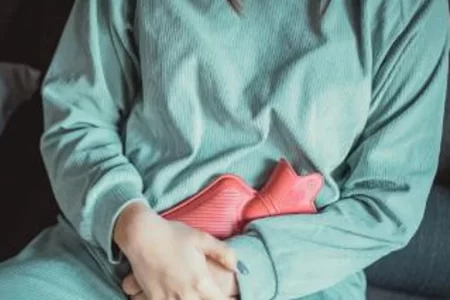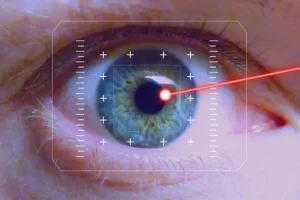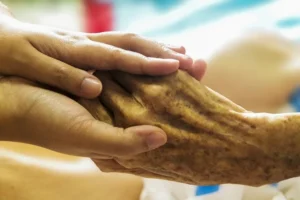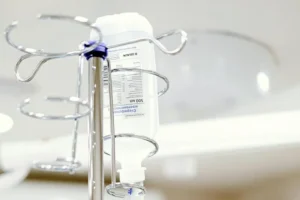Hemorrhoid Surgery (Piles Surgery)
- Updated on: Jul 15, 2024
- 3 min Read
By
- Published on Oct 3, 2019
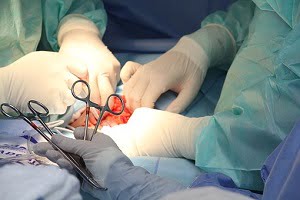
Surgery for the treatment of hemorrhoids
Surgical treatment of hemorrhoid is done in two ways as follows:
Surgeries without anesthetic
Some types of hemorrhoid surgeries can be done in a doctor’s office without the need of any anesthetic. These are such as:
Banding
Banding is a procedure that is used to treat internal hemorrhoids. This procedure is also called rubber band ligation. In this procedure, a tight band is tied around the base of a hemorrhoid to cut off its blood supply. When the area does not get any blood supply, it will die, shrink and then fall off.
Banding is done in two or more procedures that take place about two months apart. This process is not painful, but the patient may feel slight pressure or a mild discomfort.
This procedure is not recommended if the patient is taking blood thinners.
Sclerotherapy
This procedure is considered best for small and internal hemorrhoids. In this procedure, a chemical is injected into hemorrhoids. The chemical causes the hemorrhoids to shrink and stop them from bleeding. Read about bleeding haemorrhoids.
A little or no pain is experienced in the procedure during the shot.
Coagulation therapy for treating hemorrhoids
Coagulation therapy is another type of hemorrhoid surgery. It is also called infrared photocoagulation because this treatment method uses infrared light or heat. The infrared light is used to retract and shrink the hemorrhoid.
The procedure is usually carried out along with an anoscopy (a visualization procedure in which a scope is inserted several inches into your rectum to look inside it). Only mild discomfort or cramping is experienced during the treatment.
More: Sitz Bath For Relief From Hemorrhoids
More: Can Hemorrhoids Go Away On Their Own?
Hemorrhoidal artery ligation
Hemorrhoidal artery ligation (HAL) is also known as transanal haemorrhoidal dearterialization (THD). In this method, an ultrasound is used to locate the blood vessels which supply blood to hemorrhoids. After locating, these blood vessels are ligated or closed off.
This procedure is more effective than rubber banding but it is costly and results in longer-lasting pain.
Surgeries with anesthetics
Other types of surgeries are performed in a hospital under an anesthetic. The patient feels no pain or discomfort during these surgeries too.
Hemorrhoidectomy for treating hemorrhoids
A haemorrhoidectomy is a haemorrhoids surgery and is used for the treatment of two types of hemorrhoids:
- large external hemorrhoids
- internal hemorrhoids (that have prolapsed or are causing problems and not responding to nonsurgical treatments)
The choice of anesthesia is done by the doctor and the patient. Various types of anesthesia during piles surgery may include such as:
- general anesthesia (the patient gets into a deep sleep throughout the surgery)
- regional anesthesia (numbs the patient’s body from the waist down, being delivered by a shot into the back)
- local anesthesia (numbs only the anus and rectum).
Once the anesthesiais is given and it shows its effect, the surgeon will cut out the large hemorrhoids. After the operation, the patient is taken to a recovery room for a brief period of observation. Once the medical team is sure that the patient’s vital signs are stable, he will be discharged from the hospital.
Main risks of a piles surgery are pain and infection.
See also: Different Medicines For Hemorrhoids
See also: How Can Piles Pain Be Relieved?
Hemorrhoidopexy
Hemorrhoidopexy is sometimes referred to as stapling and is used to treat prolapsed hemorrhoids. It is usually a day surgery in a hospital, and it requires general, regional, or local anesthesia (according to the need).
In this procedure, the surgeon fixes the prolapsed hemorrhoid back into place using a surgical staple. After this, the blood supply to the area is cut off so that the tissue will shrink and be reabsorbed.
Stapling is less painful than haemorrhoidectomy and also takes less time in the recovery process.
Hemorrhoid surgery recovery time
The first few days after a piles operation can be quite painful but most people recover quickly within about 10 to 14 days and they also return to all of their regular activities. Still, there are certain care considerations that a patient should be careful about, such as:
- not able to drive while taking narcotics
- avoiding vigorous exercise and heavy lifting for about ten days
The first week of the surgery is very crucial. During this period, it is important to watch for any sign of complications from the procedure. Presence of any of the following conditions may require to call the doctor immediately:
- Inability to urinate
- Heavy bleeding from the surgical wound
- A blood blister (hematoma) inside the incision
- Fever or chills
- Fecal matter trapped in the rectal canal





